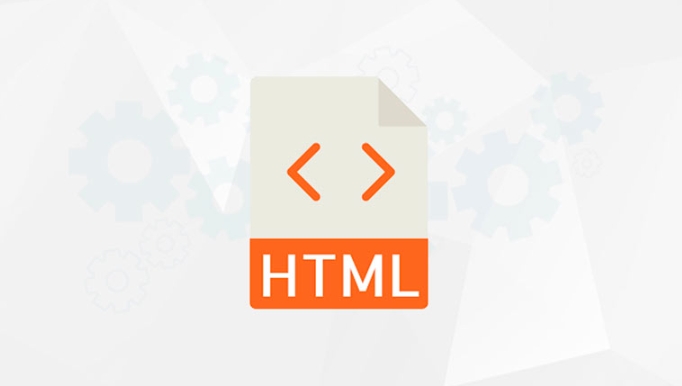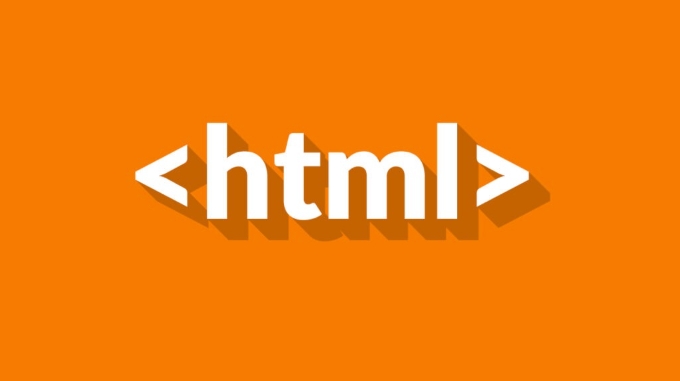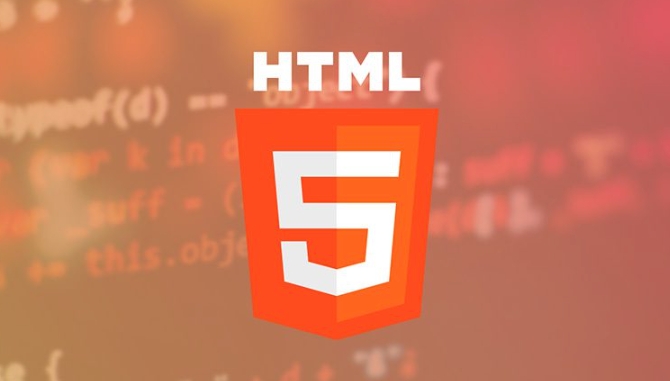Key Differences and Use Cases for HTML class and id Attributes
Jul 14, 2025 am 02:37 AMId is used to uniquely identify elements, such as navigation bar, footer; class is used to reusable styles, such as buttons, and status switching. 1. The id must be unique, suitable for anchor positioning and JavaScript precise operation; 2. Class can be used for multiple elements, supports multiple selection and combination, and is suitable for component design; 3. The priority of id in CSS is higher than class; 4. Use id for layout, and class for interactive logic; 5. The naming should be clear and semantic to avoid abuse or vague description.

In web development, class and id are two of the most commonly used attributes in HTML, used to add identifiers to elements, making it convenient for CSS style control and JavaScript operations. They look a lot like it, but have different uses and rules. Simply put: an id represents a unique identifier, and a class can be reused .

When to use id?
The biggest feature of id is "uniqueness" - there cannot be two identical ids in the page. This makes it ideal for identifying structures or components unique to the page.

Common usage scenarios include:
- Global elements such as page main title, navigation bar, footer, etc.
- Positions that need to be positioned through anchor jump (for example
<a href="#section1"></a>) - A specific element in JavaScript that needs to be operated accurately
For example:

<div id="main-header">This is the main title of the website</div>
A few points to note:
- The id name must be unique
- Naming suggestions are clear and semantic, such as
#sidebarand#user-profile - Don't abuse id to write styles because reusability is poor
When to use class?
The advantage of class lies in its "reusability". The same class can be applied to multiple elements, which is the key to style reuse and component design.
Suitable occasions include:
- Multiple elements share the same style (such as buttons, cards)
- Elements that need to switch styles according to state (such as
.active,.hidden) - In componentized front-end frameworks (such as React, Vue)
For example:
<button class="btn">Submit</button> <button class="btn">Cancel</button>
Some tips:
- class can have multiple, separated by spaces, for example
<div class="card featured"> <li> Class names are recommended to be concise and clear, avoiding excessively long or vague naming</li> <li> Using naming specifications such as BEM can help maintain large projects</li> <hr> <h3 id="The-difference-between-id-and-class-in-CSS-and-JS"> The difference between id and class in CSS and JS</h3> <p> Functionally, both can be accessed by CSS and JavaScript, but there are differences in usage and priority.</p> <p> CSS Level:</p> <ul> <li> The id selector has a higher priority than class (which means that the id style is more likely to take effect if it conflicts)</li> <li> class supports multiple selection and can be used in combination, while id can only have one</li> </ul> <p> JavaScript Level:</p> <ul> <li> Get the id element with <code>document.getElementById('xxx') - Get the class element with
document.getElementsByClassName()ordocument.querySelectorAll('.xxx') - id is more suitable for direct positioning of a single element, class is more suitable for batch processing
Recommendations for use in actual development
How to choose id and class when actually writing code? Here are a few practical suggestions:
Use id for layout structure, and use class for style components
For example, the page container can be used with#container, but the buttons are uniformly used with.btnAvoid overuse of id writing styles
Because the id has high priority, it can easily lead to style coverage problems and debugging is troublesomeDynamic interaction logic prioritizes class
For example, toggle menu expand and close, useclassList.toggle()to operate class more flexibleKeep semantics clear and naming meaningful
Do not use class names that describe styles such as.redor.big, but should use semantic names such as.error-messageor.highlight
Basically that's it. class and id have their own bits. Only by understanding their differences can you write clearer and easier to maintain HTML structure and style logic.
The above is the detailed content of Key Differences and Use Cases for HTML class and id Attributes. For more information, please follow other related articles on the PHP Chinese website!

Hot AI Tools

Undress AI Tool
Undress images for free

Undresser.AI Undress
AI-powered app for creating realistic nude photos

AI Clothes Remover
Online AI tool for removing clothes from photos.

Clothoff.io
AI clothes remover

Video Face Swap
Swap faces in any video effortlessly with our completely free AI face swap tool!

Hot Article

Hot Tools

Notepad++7.3.1
Easy-to-use and free code editor

SublimeText3 Chinese version
Chinese version, very easy to use

Zend Studio 13.0.1
Powerful PHP integrated development environment

Dreamweaver CS6
Visual web development tools

SublimeText3 Mac version
God-level code editing software (SublimeText3)
 The `` vs. `` in HTML
Jul 19, 2025 am 12:41 AM
The `` vs. `` in HTML
Jul 19, 2025 am 12:41 AM
It is a block-level element, used to divide large block content areas; it is an inline element, suitable for wrapping small segments of text or content fragments. The specific differences are as follows: 1. Exclusively occupy a row, width and height, inner and outer margins can be set, which are often used in layout structures such as headers, sidebars, etc.; 2. Do not wrap lines, only occupy the content width, and are used for local style control such as discoloration, bolding, etc.; 3. In terms of usage scenarios, it is suitable for the layout and structure organization of the overall area, and is used for small-scale style adjustments that do not affect the overall layout; 4. When nesting, it can contain any elements, and block-level elements should not be nested inside.
 Specifying Character Encoding for HTML Documents (UTF-8)
Jul 15, 2025 am 01:43 AM
Specifying Character Encoding for HTML Documents (UTF-8)
Jul 15, 2025 am 01:43 AM
To correctly set the character encoding of the HTML document to UTF-8, you need to follow three steps: 1. Add at the top of the HTML5 part; 2. Configure the response header Content-Type: text/html; charset=UTF-8, if Apache uses AddDefaultCharsetUTF-8, Nginx uses charsetutf-8; 3. Select the UTF-8 encoding format when saving HTML files in the editor. These three links are indispensable, otherwise it may lead to garbled page code and failure of special character parsing, affecting user experience and SEO effect. It is important to ensure that HTML declaration, server configuration and file saving are consistent.
 Essential HTML Tags for Beginners
Jul 27, 2025 am 03:45 AM
Essential HTML Tags for Beginners
Jul 27, 2025 am 03:45 AM
To get started with HTML quickly, you only need to master a few basic tags to build a web skeleton. 1. The page structure is essential, and, which is the root element, contains meta information, and is the content display area. 2. Use the title. The higher the level, the smaller the number. Use tags to segment the text to avoid skipping the level. 3. The link uses tags and matches the href attributes, and the image uses tags and contains src and alt attributes. 4. The list is divided into unordered lists and ordered lists. Each entry is represented and must be nested in the list. 5. Beginners don’t have to force memorize all tags. It is more efficient to write and check them while you are writing. Master the structure, text, links, pictures and lists to create basic web pages.
 Shadow DOM Concepts and HTML Integration
Jul 24, 2025 am 01:39 AM
Shadow DOM Concepts and HTML Integration
Jul 24, 2025 am 01:39 AM
ShadowDOM is a technology used in web component technology to create isolated DOM subtrees. 1. It allows the mount of an independent DOM structure on ordinary HTML elements, with its own styles and behaviors, and does not affect the main document; 2. Created through JavaScript, such as using the attachShadow method and setting the mode to open; 3. When used in combination with HTML, it has three major features: clear structure, style isolation and content projection (slot); 4. Notes include complex debugging, style scope control, performance overhead and framework compatibility issues. In short, ShadowDOM provides native encapsulation capabilities for building reusable and non-polluting UI components.
 Why is my image not showing up in HTML?
Jul 28, 2025 am 02:08 AM
Why is my image not showing up in HTML?
Jul 28, 2025 am 02:08 AM
Image not displayed is usually caused by a wrong file path, incorrect file name or extension, HTML syntax issues, or browser cache. 1. Make sure that the src path is consistent with the actual location of the file and use the correct relative path; 2. Check whether the file name case and extension match exactly, and verify whether the image can be loaded by directly entering the URL; 3. Check whether the img tag syntax is correct, ensure that there are no redundant characters and the alt attribute value is appropriate; 4. Try to force refresh the page, clear the cache, or use incognito mode to eliminate cache interference. Troubleshooting in this order can solve most HTML image display problems.
 HTML `style` Tag: Inline vs. Internal CSS
Jul 26, 2025 am 07:23 AM
HTML `style` Tag: Inline vs. Internal CSS
Jul 26, 2025 am 07:23 AM
The style placement method needs to be selected according to the scene. 1. Inline is suitable for temporary modification of single elements or dynamic JS control, such as the button color changes with operation; 2. Internal CSS is suitable for projects with few pages and simple structure, which is convenient for centralized management of styles, such as basic style settings of login pages; 3. Priority is given to reuse, maintenance and performance, and it is better to split external link CSS files for large projects.
 Can you put a tag inside another tag?
Jul 27, 2025 am 04:15 AM
Can you put a tag inside another tag?
Jul 27, 2025 am 04:15 AM
?Youcannotnesttagsinsideanothertagbecauseit’sinvalidHTML;browsersautomaticallyclosethefirstbeforeopeningthenext,resultinginseparateparagraphs.?Instead,useinlineelementslike,,orforstylingwithinaparagraph,orblockcontainerslikeortogroupmultipleparagraph
 HTML `link` for Prefetching DNS
Jul 23, 2025 am 02:19 AM
HTML `link` for Prefetching DNS
Jul 23, 2025 am 02:19 AM
Pre-resolving DNS can speed up page loading speed, and using HTML link tags for DNS pre-resolving is an effective method; DNSPrefetching saves subsequent request time by resolving domain names in advance; applicable scenarios include third-party fonts, advertising statistics scripts, resource hosting and CDN domain names; it is recommended to prioritize the main page dependency resources, reasonably control the number between 3 and 5, and use it with preconnect to better effect.






